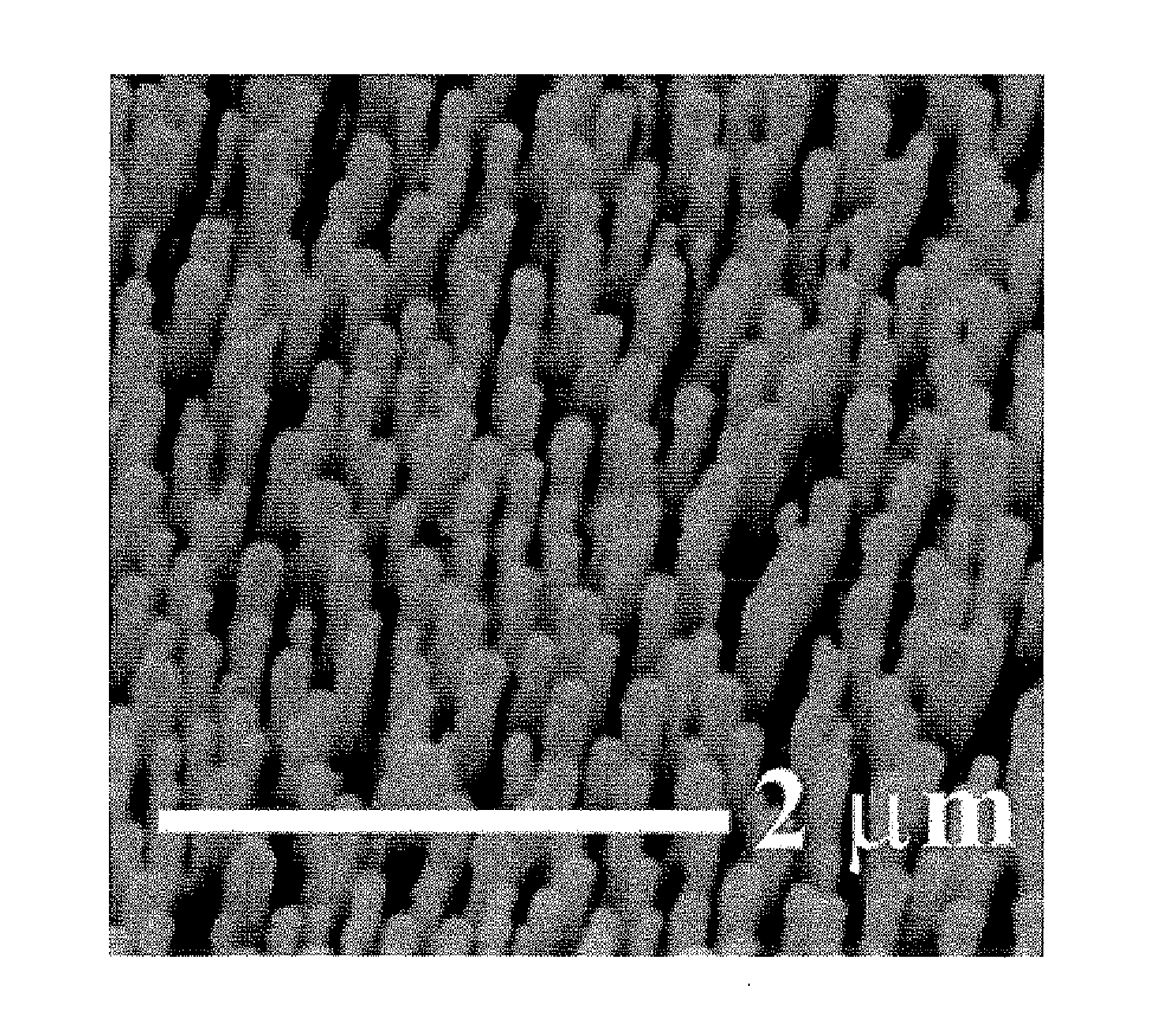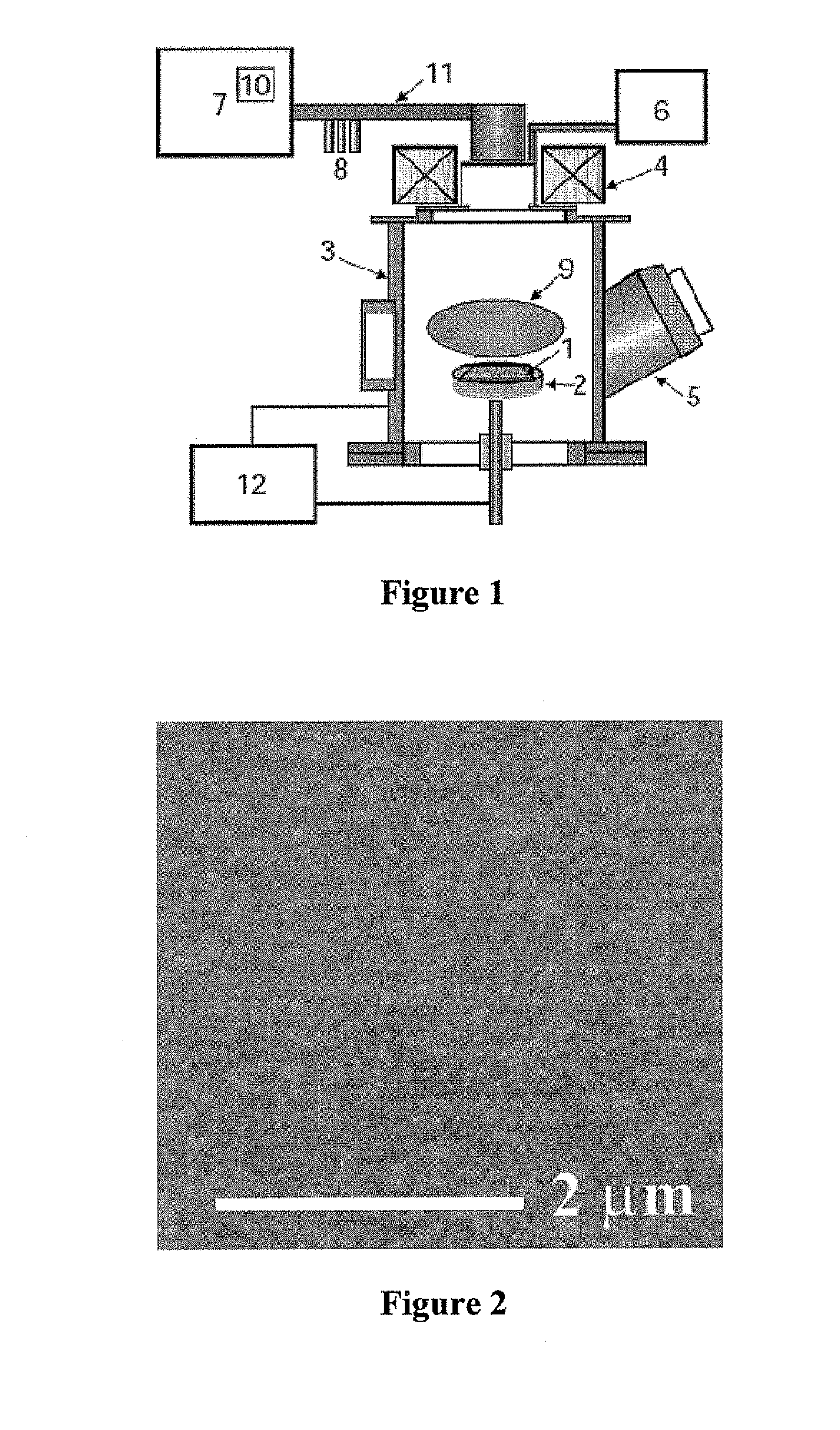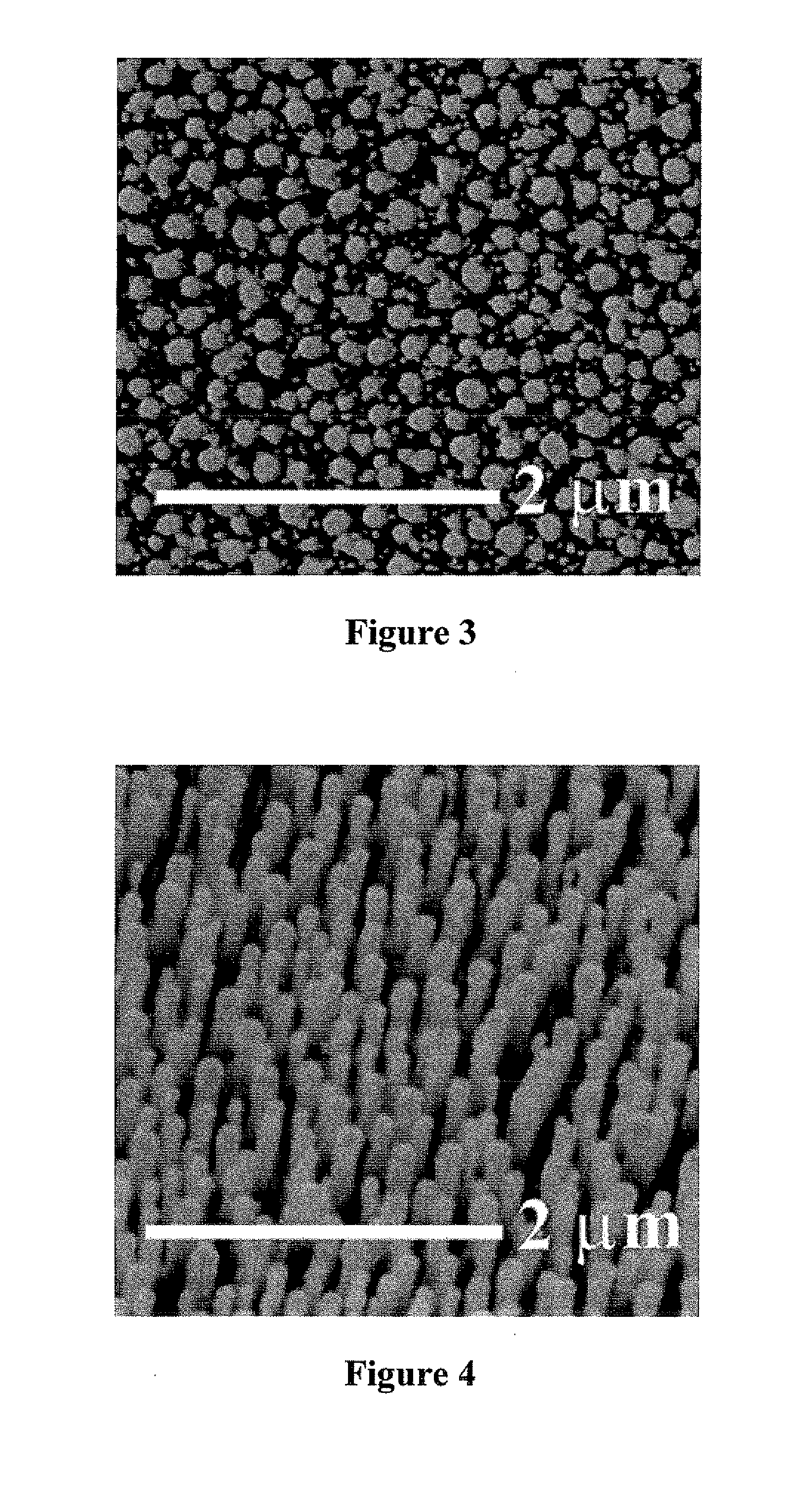Method of making diamond nanopillars
a diamond nanoparticle and nanoparticle technology, applied in the direction of crystal growth process, polycrystalline material growth, chemically reactive gas, etc., can solve the problem of difficult structure to a desired geometry to fully explore the advantages of diamond in different applications, and achieve the effect of expanding the application potential of diamond
- Summary
- Abstract
- Description
- Claims
- Application Information
AI Technical Summary
Benefits of technology
Problems solved by technology
Method used
Image
Examples
example 1
[0033]Nano-D films were deposited using a commercial ASTeX microwave plasma CVD (MWCVD) reactor equipped with a 5 kW microwave generator as shown in FIG. 1. N-type (001) silicon wafers of 3 inches in diameter were used as substrates. Prior to deposition, the substrate was ultrasonically abraded for 60 min in a suspension of nano-D powders with the grain size of ˜5 nm in ethanol. A 10% CH4 / H2 gas mixture was used as the reactive gas source for nano-D deposition. The total gas flow rate was 200 sccm and the pressure was maintained at 30 torr. The microwave power and deposition temperature were set at 1200 W and 800 degrees-C., respectively. The gold films employed as etching masks were deposited onto the deposited nano-D film with a magnetron sputtering system (Auto 306, Edwards). The thickness of the gold layer mask was about 5 nm.
[0034]FIG. 2 shows the SEM plain-view image of a nano-D film pre-coated with a thin gold mask layer. The sample was used as the starting material for struc...
example 2
[0038]Micro-D films can also be structured into diamond nanopillar arrays. The micro-D deposition and structuring were performed in the same deposition system as described above in example 1. The bias-enhanced nucleation (BEN) was used to enhance nucleation for the micro-D deposition, and the BEN was performed in a 5% CH4 / 95% H2 gas mixture at dynamic pressure of 20 Torr provided with a total gas flow rate of 300 sccm. The plasma was induced with a microwave power of 800 W. The substrate temperature was 850 degrees-C. and substrate bias was maintained at −150 V. The BEN took 15 minutes. During the process of diamond growth, the methane concentration was reduced to 0.5%, the total gas flow was kept at 300 sccm, and the total pressure was adjusted to 30 torr. The substrate was maintained 800 degrees-C., while the microwave power was increased to 1200 W.
[0039]FIG. 6 shows the SEM plain-view image of a randomly-oriented micro-D film deposited on silicon substrate. The diamond film is ab...
PUM
 Login to View More
Login to View More Abstract
Description
Claims
Application Information
 Login to View More
Login to View More - R&D
- Intellectual Property
- Life Sciences
- Materials
- Tech Scout
- Unparalleled Data Quality
- Higher Quality Content
- 60% Fewer Hallucinations
Browse by: Latest US Patents, China's latest patents, Technical Efficacy Thesaurus, Application Domain, Technology Topic, Popular Technical Reports.
© 2025 PatSnap. All rights reserved.Legal|Privacy policy|Modern Slavery Act Transparency Statement|Sitemap|About US| Contact US: help@patsnap.com



